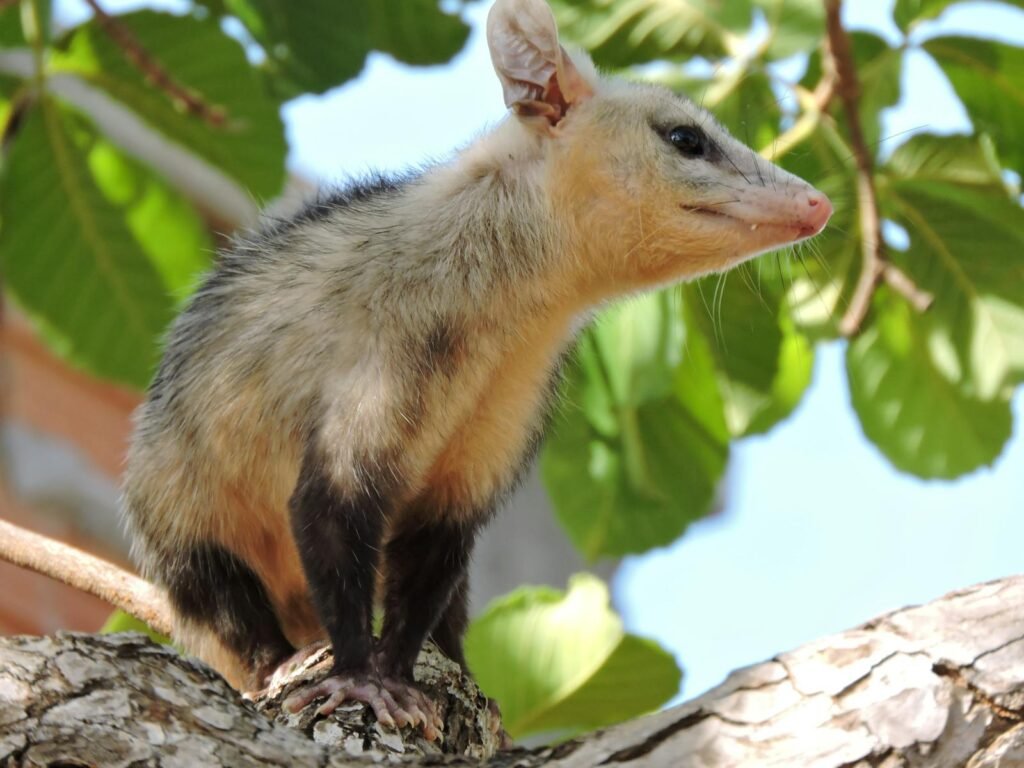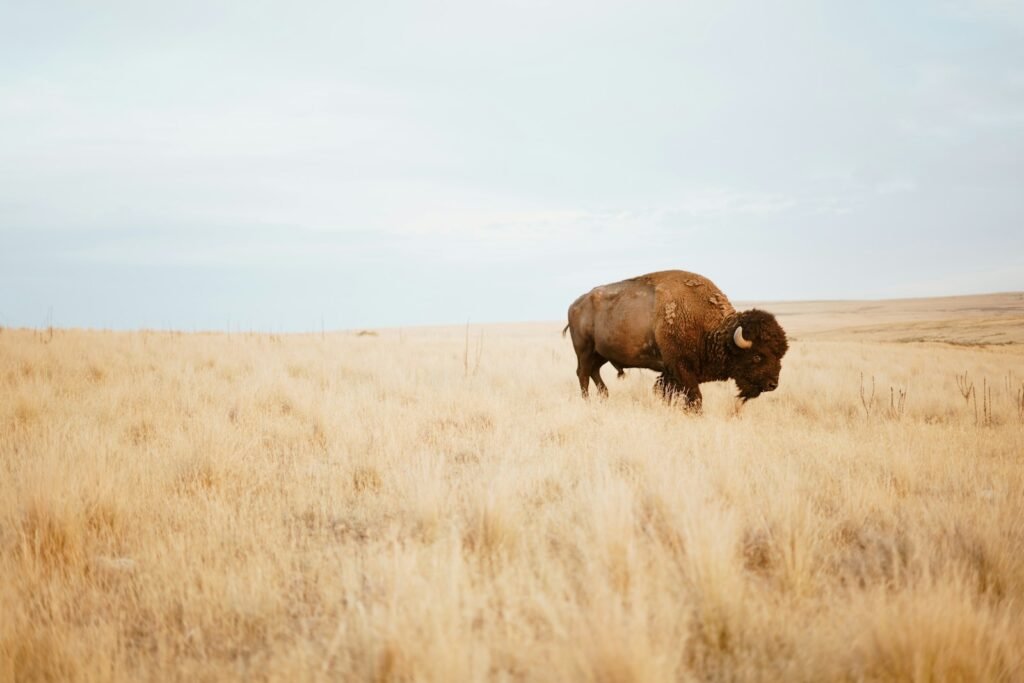In the shadowy corners of suburban neighborhoods, a misunderstood hero waddles through the night. While most people sleep peacefully in their beds, these ancient marsupials are busy performing one of nature’s most valuable services. Armed with nothing but their appetite and immunity, opossums work tirelessly to keep our communities safer and healthier. Yet despite their incredible contributions, these remarkable creatures remain among the most underappreciated animals in North America.
The Unsung Guardians of Our Backyards

Every single night, opossums emerge from their dens to begin what scientists call “ecological maintenance.” These nocturnal creatures don’t just wander aimlessly through our neighborhoods – they’re on a mission. Their keen sense of smell guides them to areas where pests congregate, turning our backyards into their hunting grounds.
What makes opossums particularly valuable is their willingness to tackle pests that other animals avoid. While cats might catch the occasional mouse, opossums systematically patrol entire territories. They don’t discriminate based on size or species – from tiny insects to medium-sized rodents, everything is fair game.
The impact of a single opossum’s nightly patrol can be staggering. Research shows that one opossum can eliminate thousands of pests in a single season. This natural pest control happens without any human intervention, chemicals, or expensive equipment.
Tick-Eating Machines That Put Vacuums to Shame

Perhaps the most remarkable service opossums provide is their incredible ability to consume ticks. These marsupials are walking tick-removal machines, capable of eating up to 5,000 ticks per week during peak season. Their grooming behavior is so thorough that they consume nearly every tick that attempts to attach to their fur.
The implications for human health are profound. Ticks carry dangerous diseases like Lyme disease, Rocky Mountain spotted fever, and ehrlichiosis. Each tick an opossum consumes represents a potential threat eliminated from our environment. In areas with healthy opossum populations, tick-borne illness rates tend to be significantly lower.
Unlike chemical tick treatments that can harm beneficial insects, opossums provide targeted pest control. They specifically seek out ticks while leaving pollinating insects and other beneficial creatures unharmed. This precision makes them invaluable allies in maintaining ecological balance.
Silent Soldiers Against Disease-Carrying Mosquitoes

While opossums don’t actively hunt flying mosquitoes, they excel at eliminating mosquito breeding sites. These resourceful creatures consume mosquito larvae found in standing water, effectively breaking the reproductive cycle of these disease-carrying insects. They also eat adult mosquitoes when the opportunity arises during their ground-level foraging.
The reduction in mosquito populations has direct benefits for human health and comfort. Fewer mosquitoes mean reduced transmission of diseases like West Nile virus, Zika, and dengue fever. For families trying to enjoy outdoor activities, the presence of opossums can make backyards significantly more pleasant.
This mosquito control happens naturally without any environmental disruption. Unlike pesticide spraying programs that can harm beneficial insects, opossums provide selective pressure that targets problem species while preserving ecosystem balance.
Cockroach Cleanup Crews Working Overtime

Cockroaches represent one of humanity’s most persistent pest problems, but opossums view them as delicious midnight snacks. These marsupials have no qualms about crunching through cockroach exoskeletons, making them incredibly effective at controlling infestations. Their ability to access tight spaces where cockroaches hide gives them a significant advantage over other pest control methods.
The economic impact of natural cockroach control is substantial. Professional pest control services can cost homeowners hundreds of dollars annually, while a resident opossum provides the same service for free. The presence of opossums can prevent small cockroach problems from becoming major infestations.
Unlike chemical treatments that may only provide temporary relief, opossums offer ongoing pest management. They patrol the same areas repeatedly, ensuring that new cockroach populations don’t have a chance to establish themselves.
Rat and Mouse Population Controllers

Opossums serve as nature’s answer to rodent control, effectively managing rat and mouse populations in urban and suburban areas. Their omnivorous diet makes them willing to consume both live rodents and carrion, addressing multiple aspects of pest management simultaneously. Young opossums are particularly effective at catching smaller rodents, while adults can handle larger rats.
The health benefits of natural rodent control cannot be overstated. Rats and mice carry numerous diseases that can be transmitted to humans, including salmonella, hantavirus, and plague. By keeping rodent populations in check, opossums create a protective barrier around our homes and communities.
Traditional rodent control methods often involve poisons that can harm pets, children, and wildlife. Opossums provide a safe, natural alternative that doesn’t introduce toxic chemicals into the environment. Their presence creates a sustainable solution to ongoing rodent problems.
Garbage Disposal Units That Never Break Down

One of the most underappreciated services opossums provide is their role as nature’s cleanup crew. These opportunistic feeders consume fallen fruit, pet food left outside, and other organic waste that might otherwise attract more problematic pests. Their scavenging behavior helps maintain neighborhood cleanliness and reduces food sources for unwanted animals.
The decomposition process that opossums facilitate is crucial for ecosystem health. By consuming carrion and organic waste, they accelerate nutrient cycling and prevent the buildup of decaying matter that could harbor disease-causing bacteria. This natural recycling service operates continuously without any human maintenance or energy consumption.
Property owners often don’t realize how much organic waste accumulates in their yards until opossums are no longer present to manage it. The absence of these natural janitors can lead to increased pest problems and unpleasant odors.
The Immunity Advantage: Why Opossums Excel at Pest Control

Opossums possess several unique biological advantages that make them exceptionally effective pest controllers. Their body temperature runs lower than most mammals, creating an environment where many disease-causing organisms cannot survive. This natural immunity allows them to safely consume pests that might sicken other animals.
Their immune system produces antibodies that neutralize various toxins and pathogens. This remarkable resilience means opossums can eat venomous snakes, diseased rodents, and contaminated insects without suffering ill effects. They essentially serve as biological filters, removing dangerous organisms from the environment.
The evolutionary history of opossums has equipped them with sophisticated detoxification mechanisms. These adaptations allow them to process and eliminate harmful substances that would be lethal to other creatures, making them uniquely qualified for their pest control role.
Seasonal Pest Management: Year-Round Protection

Unlike many animals that hibernate or migrate, opossums remain active throughout most of the year, providing consistent pest control services. During spring and summer, they focus on reproducing insects and larvae, preventing pest population explosions. Fall brings opportunities to consume overwintering pests and reduce next year’s breeding populations.
Even during winter months, opossums continue their pest control activities whenever temperatures allow. They adapt their hunting strategies to target dormant insects and rodents seeking shelter in human structures. This year-round activity provides continuous protection against pest buildup.
The seasonal variation in opossum diet reflects changing pest availability, demonstrating their flexible approach to ecosystem management. They shift their focus from ticks in summer to rodents in winter, always targeting the most abundant pest species.
Urban Adaptation: Thriving in Human Environments

Opossums have successfully adapted to urban environments, making them particularly valuable in densely populated areas where pest problems are most severe. Their ability to navigate complex urban landscapes allows them to access pest populations in locations that would be difficult for humans to treat effectively.
Cities provide opossums with abundant food sources and shelter opportunities, supporting larger populations than might exist in purely natural habitats. This urban adaptation means more opossums are available to provide pest control services where they’re needed most. Their presence in urban environments creates a natural balance that benefits both wildlife and humans.
The success of opossums in urban settings demonstrates the potential for wildlife-human coexistence. Rather than viewing them as nuisances, urban planners are beginning to recognize their ecological value and incorporate wildlife-friendly design elements into city development.
The Economics of Natural Pest Control

The economic value of opossum pest control services is substantial, though rarely quantified. Professional pest control companies charge hundreds of dollars for services that opossums provide naturally and continuously. A single opossum family can provide pest control worth thousands of dollars annually to surrounding properties.
The cost savings extend beyond direct pest control expenses. Reduced pest populations mean fewer crop losses, lower veterinary bills for pets, and decreased healthcare costs related to pest-borne diseases. These indirect benefits multiply the economic impact of opossum conservation.
Property values in areas with healthy opossum populations may benefit from reduced pest problems and lower maintenance costs. The presence of effective natural pest control can make neighborhoods more attractive to potential buyers and reduce ongoing property management expenses.
Ecological Balance: More Than Just Pest Control

Opossums contribute to ecological balance in ways that extend far beyond simple pest control. Their foraging activities help disperse seeds, contributing to plant diversity and forest regeneration. They also serve as prey for larger predators, supporting complex food webs that maintain ecosystem stability.
The presence of opossums indicates a healthy ecosystem with sufficient resources to support diverse wildlife populations. Their success often correlates with overall environmental quality, making them valuable indicators of ecological health. Communities with thriving opossum populations typically enjoy greater biodiversity and ecosystem resilience.
By maintaining natural pest control services, opossums reduce the need for chemical interventions that can disrupt ecological balance. Their role as ecosystem engineers creates conditions that support other beneficial species while suppressing problematic ones.
Overcoming Misconceptions: The Truth About Opossums

Despite their valuable contributions, opossums face numerous misconceptions that prevent people from appreciating their benefits. Many people fear opossums due to their unusual appearance and defensive behaviors, not realizing that these creatures are actually quite docile and beneficial. Their famous “playing dead” response is a defense mechanism, not aggressive behavior.
Concerns about opossums carrying rabies are largely unfounded due to their low body temperature, which makes rabies virus survival unlikely. They’re actually much less likely to carry rabies than many other mammals. This biological fact makes them safer neighbors than many people realize.
The perception of opossums as dirty or disease-carrying animals contradicts scientific evidence. Their grooming behaviors and immune systems actually make them cleaner than many other urban wildlife species. Education about these facts can help communities appreciate their pest control services.
Creating Opossum-Friendly Environments

Homeowners can encourage beneficial opossum populations by creating suitable habitat conditions. Providing shelter options like brush piles, hollow logs, or specialized opossum houses can support local populations. Access to water sources and diverse food options also help sustain healthy opossum communities.
Avoiding the use of pesticides and rodenticides protects opossums from secondary poisoning while allowing them to fulfill their natural pest control role. These chemicals can accumulate in opossum tissues when they consume contaminated prey, potentially harming or killing these beneficial animals.
Simple modifications to property management can make areas more attractive to opossums. Leaving natural areas undisturbed, maintaining diverse vegetation, and avoiding excessive lighting can create conditions that support opossum populations while maximizing their pest control benefits.
The Future of Wildlife-Based Pest Management

As concerns about chemical pesticides and environmental sustainability grow, natural pest control methods are gaining recognition. Opossums represent a proven model for biological pest control that operates without human intervention or environmental damage. Their success suggests potential for expanding wildlife-based pest management strategies.
Research into opossum ecology and behavior continues to reveal new insights about their pest control capabilities. Scientists are studying ways to optimize opossum populations for maximum pest control benefits while maintaining ecological balance. These studies may lead to new approaches for managing urban wildlife populations.
The integration of wildlife conservation with pest management represents a growing trend in environmental science. Opossums serve as examples of how protecting native species can provide practical benefits for human communities while supporting biodiversity conservation goals.
Conservation Implications: Protecting Our Pest Controllers

The decline of opossum populations due to habitat loss and vehicle strikes has serious implications for natural pest control services. As development reduces available habitat, opossum populations may be unable to provide the pest control benefits that communities depend on. Conservation efforts must consider the practical services that wildlife provides.
Road mortality represents a significant threat to opossum populations, particularly in areas where they provide valuable pest control services. Wildlife corridors and road crossing structures can help maintain opossum populations while reducing human-wildlife conflicts. These investments in infrastructure can provide long-term pest control benefits.
Public education about opossum conservation can help communities recognize the value of protecting these beneficial animals. When people understand the services opossums provide, they’re more likely to support conservation efforts and modify their behaviors to reduce threats to opossum populations.
Measuring Success: Quantifying Opossum Impact

Researchers are developing new methods to measure the pest control services provided by opossum populations. These studies involve tracking pest populations in areas with and without opossums, providing quantitative data about their ecological impact. The results consistently demonstrate significant pest reduction in areas with healthy opossum populations.
Camera traps and GPS tracking technology are revealing new insights about opossum foraging behavior and pest consumption patterns. These tools allow scientists to observe opossum activities without disruption, providing accurate data about their pest control contributions. The technology is advancing our understanding of how opossums operate as natural pest controllers.
Long-term monitoring programs are tracking the relationship between opossum populations and human health outcomes. These studies examine correlations between opossum presence and rates of tick-borne diseases, providing evidence for their public health benefits. The data supports the conservation of opossum populations as a health protection strategy.
Global Perspectives: Opossums in Different Ecosystems

While North American opossums are the most familiar to many people, similar marsupials provide pest control services in ecosystems worldwide. Australian possums and South American opossums fill comparable ecological roles, demonstrating the global importance of marsupial pest controllers. These species face similar conservation challenges and provide similar benefits to human communities.
Comparative studies of different opossum species reveal universal patterns in their pest control behaviors. Despite evolutionary separation, these marsupials have developed similar strategies for managing pest populations. This convergent evolution suggests that the opossum approach to pest control is highly effective across different environments.
International conservation efforts are recognizing the value of protecting marsupial pest controllers. Countries with declining opossum populations are experiencing increased pest problems and associated economic costs. These examples demonstrate the global relevance of opossum conservation for sustainable pest management.
The Quiet Revolution in Pest Management

The story of opossums reveals a quiet revolution happening in our understanding of pest management. These humble marsupials are proving that nature often provides the most effective solutions to human problems. Their success challenges us to reconsider our relationship with urban wildlife and recognize the services they provide.
As we face increasing environmental challenges, the opossum model offers hope for sustainable solutions. Their ability to thrive in human-modified environments while providing valuable ecological services demonstrates the potential for wildlife-human coexistence. The future of pest management may well depend on our ability to work with nature rather than against it.
The next time you glimpse an opossum waddling through your neighborhood, remember that you’re witnessing one of nature’s most dedicated public servants at work. These remarkable creatures are quietly protecting our health, saving us money, and maintaining the delicate balance that keeps our ecosystems functioning. Isn’t it time we gave them the recognition they deserve?

Jan loves Wildlife and Animals and is one of the founders of Animals Around The Globe. He holds an MSc in Finance & Economics and is a passionate PADI Open Water Diver. His favorite animals are Mountain Gorillas, Tigers, and Great White Sharks. He lived in South Africa, Germany, the USA, Ireland, Italy, China, and Australia. Before AATG, Jan worked for Google, Axel Springer, BMW and others.




